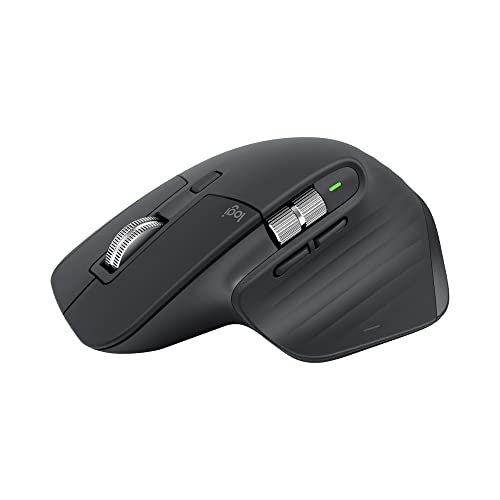Home Office Keyboard Setup
Contents
Toggle
In the era of remote work and digital nomadism, a home office has become more than just a luxury—it’s a necessity. While many focus on the desk, chair, or even the coffee machine, one often-overlooked element is the keyboard. Your keyboard is not just a tool; it’s an extension of you. It’s the gateway to your digital world, and choosing the right one can significantly impact your productivity and well-being. In this article, we’ll explore how to set up your home office with a keyboard-centric approach.
Why Keyboard Ergonomics Matter
Ergonomics isn’t just a buzzword; it’s a science that can have real implications for your health and productivity. An ergonomic keyboard can reduce strain on your wrists and fingers, making those long hours at the desk more bearable. But what makes a keyboard ergonomic?
Types of Ergonomic Keyboards
Split Keyboards
Contoured Keyboards
Angle-Split Keyboards
The Aesthetics of Your Keyboard and Workspace
Believe it or not, the design of your keyboard can significantly impact your mood and, by extension, your productivity. A keyboard with a pleasing color scheme and tactile switches can make typing a joy rather than a chore. But aesthetics aren’t just about looks; they’re about how the design of the keyboard fits into your overall workspace.
Material Choices for Durability and Style
When it comes to keyboards, the material is more than just a matter of appearance. Different materials offer varying levels of durability, comfort, and tactile feedback. Whether you prefer the sturdy feel of a metal keyboard or the lightweight comfort of a plastic one, the material you choose will have a lasting impact on your typing experience.
Ranking of Materials Based on Durability
- Metal
- PBT Plastic
- ABS Plastic
- Wood
Why metal keyboards are the most durable but may not be the most comfortable
Metal keyboards are often considered the epitome of durability. Made from materials like aluminum or steel, these keyboards can withstand a lot of wear and tear, making them ideal for heavy typists or those who are a bit rough on their equipment. However, this durability comes at the cost of comfort. Metal keyboards tend to be heavier, which can make them less portable and more cumbersome on a cluttered desk. Additionally, the rigid structure can sometimes make typing feel harsh, especially during extended periods of use. The cold touch of metal may also be less inviting compared to other materials, particularly in colder environments.
How plastic keyboards offer a balance between comfort and durability
Plastic keyboards, often made from materials like ABS or PBT, offer a middle ground between comfort and durability. They are generally lighter than metal keyboards, making them easier to move around and more comfortable for long typing sessions. The softer material also provides a more forgiving typing experience, reducing finger fatigue. While plastic keyboards may not have the same level of durability as their metal counterparts, high-quality plastics can still offer a long lifespan, resisting wear and tear to a reasonable extent. This makes them a versatile choice for a wide range of users, from casual typists to dedicated professionals.
Unique aesthetic and tactile benefits of wooden keyboards
Wooden keyboards bring a unique aesthetic and tactile experience to your desk. The natural grain patterns and warm colors of wood can add a touch of elegance and earthiness to your workspace, making it more inviting. Beyond aesthetics, wooden keyboards also offer a unique tactile experience. The organic nature of wood provides a softer, warmer touch compared to metal or plastic, which some users find more comfortable for extended periods of typing. Additionally, wood has the ability to absorb some of the impact from keystrokes, providing a softer, less jarring typing experience. However, it’s worth noting that wooden keyboards may require more maintenance to keep them looking and functioning at their best.
Recommended Products for Your Home Office Setup
Setting up a home office requires more than just a desk and a computer; it’s about creating an environment that fosters productivity and comfort. Here are some product recommendations to help you achieve just that.
Best Keyboards for Home Office
KINESIS Freestyle2
An ergonomic split keyboard
Logitech MX Keys
Known for its tactile response
Corsair K95 RGB Platinum
For those who want a bit of gaming flair in their office
Must-Have Desk Accessories
Wireless Charger,3 in 1 Faster Mag-Safe Wireless Charging Station
To keep your devices charged
Logitech MX Master 3 Mouse
For seamless multitasking
SIHOO Office Chair
Ergonomic with Footrest, Breathable Mesh Design High Back Computer Chair, Adjustable Headrest and Lumbar Support
BenQ e-Reading LED Desk Lamp
Offers adjustable color temperature
Connectivity and Compatibility
In today’s interconnected world, the way your keyboard connects to your computer is more important than ever. Whether you prefer the reliability of a wired connection or the freedom of Bluetooth, understanding your keyboard’s connectivity options can save you from potential headaches down the line.
Wired vs. Wireless: The pros and cons of each.
Compatibility issues and how to resolve them.
Maintenance and Troubleshooting
A keyboard is like any other piece of equipment; it requires regular maintenance to function at its best. From cleaning the keycaps to troubleshooting unresponsive keys, a little upkeep can go a long way in extending the life of your keyboard.
Learn more about maintenance and troubleshooting (Keyboard Issues and Fixes)
Conclusion
Setting up a home office is an exciting endeavor, but it’s crucial to pay attention to the details. Your keyboard, often overlooked, is one of those details that can make or break your work environment. From the ergonomics to the aesthetics, from the material to the maintenance, every aspect matters.







